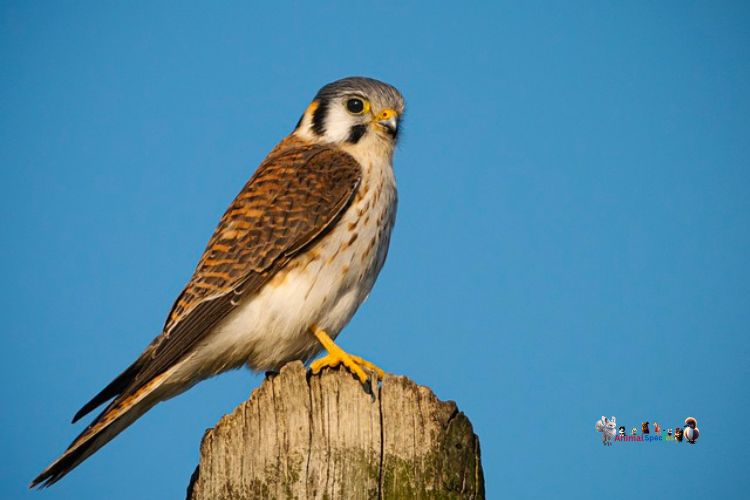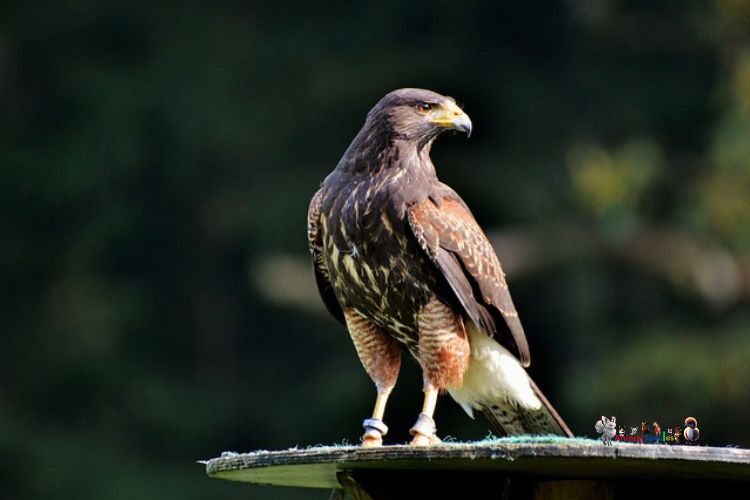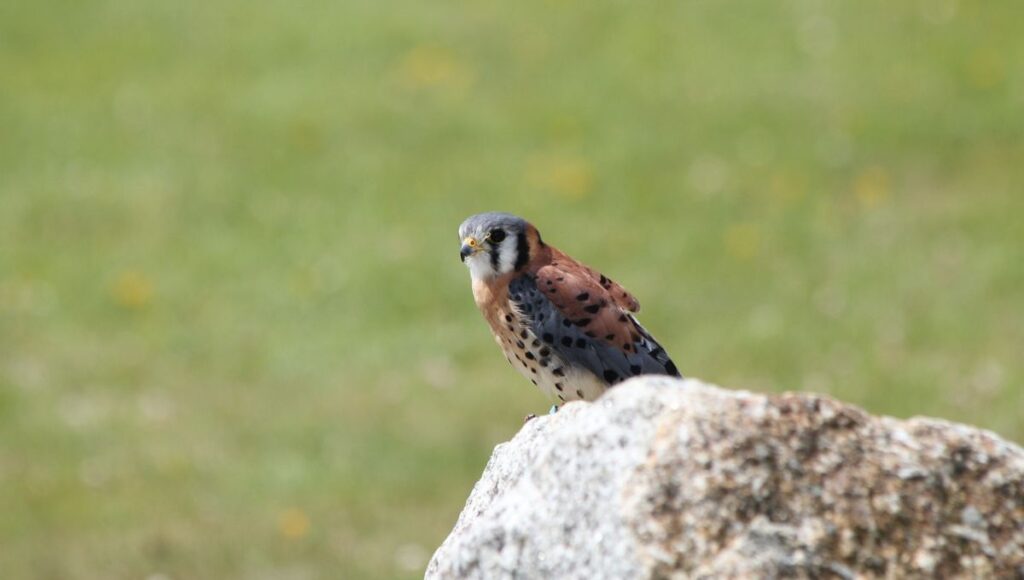Falcons are known for their speed and agility. They are the fastest birds in the world, with the peregrine falcon capable of reaching speeds of up to 240 mph in a dive. Falcons use their speed to catch prey, such as small birds, rodents, and bats.
In addition to their speed, falcons are also known for their keen eyesight. They have a visual acuity that is up to 20 times better than human eyesight. This allows them to spot prey from great distances.
Alabama is home to five species of falcons: the American kestrel, the Merlin, Crested Caracara, Prairie Falcon, and the Peregrine falcon. These birds of prey are found in various habitats throughout the state, from open fields to forests to urban areas.
Falcons play an essential role in the ecosystem. They help to control populations of small animals, such as rodents. This helps to keep these populations in check and prevents them from becoming pests.
All Types of Falcons in Alabama
- American Kestrel
- Merlin
- Peregrine Falcon
- Crested Caracara
- Prairie Falcon
American Kestrel

The American Kestrel is the smallest falcon in North America. It is about the size of a robin, with a wingspan of about 18 inches.
They are found throughout Alabama, in a variety of habitats, including open fields, meadows, forests, and even urban areas.
They are known for their distinctive hunting behavior, which involves hovering in the air in front of a field or meadow and then diving down to catch their prey.
Their diet consists mainly of small mammals, such as mice and voles, as well as insects, such as grasshoppers and crickets. American Kestrels are cavity nesters, and they often use abandoned.
Here are some additional fun facts about American Kestrels:
- They are known for their beautiful plumage, which is often a combination of rufous-colored backs and tails, slate blue wings and caps, and pale undersides.
- They have excellent eyesight, which is about 8 times stronger than human eyesight. This allows them to spot their prey from a great distance.
- They are very vocal birds, and their calls are often described as a series of high-pitched chirps.
- American Kestrels are very agile fliers, and they are able to hover in the air in front of a field or meadow for long periods of time. This allows them to scan the ground for prey.
d woodpecker holes or nest boxes. They typically lay 4-5 eggs, which hatch after about 28 days. The American Kestrel is a common and widespread species, and it is not considered to be threatened or endangered.
Merlin

The Merlin is a small, fast-flying falcon found in various regions, including North America.
They are known for their swift flight and are often seen hunting small birds in open areas or perching on exposed branches.
They have a diverse range of habitats, including forests, grasslands, and coastal areas. In Alabama, you might spot Merlins during their migratory seasons.
Peregrine Falcon

The Peregrine Falcon is a medium-sized falcon that is found throughout Alabama. They are the fastest birds in the world, capable of reaching speeds of up to 200 mph during their characteristic hunting stoop.
Peregrine Falcons are typically found in open areas, such as cliffs, open fields, and beaches. They hunt small birds, such as pigeons, doves, and sparrows.
Peregrine Falcons are cavity nesters, and they often use abandoned nests of other birds, such as hawks or owls.
Peregrine Falcons were once endangered in the United States, but they have made a remarkable comeback thanks to conservation efforts. They are now considered to be a species of least concern.
Here are some additional facts about Peregrine Falcons in Alabama:
- They are about 15 inches long and have a wingspan of about 40 inches.
- They have a black head and back, with a white throat and chest. Their underwings are barred with black and white.
- Their call is a high-pitched screech.
- They typically lay 3-4 eggs, which hatch after about 30 days.
- The young falcons fledge after about 45 days.
If you are lucky enough to see a Peregrine Falcon in Alabama, be sure to take a moment to appreciate this amazing bird of prey.
Crested Caracara

Crested Caracaras are not native to Alabama, but they have been seen in the state on a few occasions. The most recent sighting was in 2019 when a crested caracara was seen in Baldwin County.
Crested Caracaras are large birds, about the size of a turkey vulture. They have a brown body with a black crest on their head. Their underparts are white, and they have a long, hooked beak.
Crested Caracaras are scavengers, and they often eat carrion. They will also eat small mammals, birds, reptiles, and insects.
Crested Caracaras are social birds, and they often gather in groups. They are also very vocal, and their calls can be heard from a long distance.
Prairie Falcon

The Prairie Falcon is an uncommon species in Alabama and is considered an accidental visitor. It is typically found in the western United States but has been known to wander east on occasion.
Prairie Falcons are medium-sized falcons, about the size of a crow. They have a brown back and wings, with a white belly and chest. They have a black head and a white stripe above their eyes. Their tails are long and pointed.
Prairie Falcons are fast fliers, and they are known for their ability to soar for long periods of time. They hunt small mammals, such as rabbits, rodents, and ground squirrels. They will also take birds, such as doves, pigeons, and quail.
Prairie Falcons are cavity nesters, and they often use abandoned nests of other birds, such as hawks or owls. They typically lay 3-5 eggs, which hatch after about 30 days. The young falcons fledge after about 45 days.
Conclusion
Falcons are fascinating creatures that are a joy to watch. If you’re interested in seeing these birds in the wild, there are a few things you can do. First, be sure to visit some of the state’s many parks and preserves. These areas are home to a variety of birdlife, including falcons.
Second, be aware of the birds’ migratory patterns. Some of Alabama’s falcons, such as the peregrine falcon, migrate long distances. If you’re hoping to see these birds, be sure to visit the state during their migration season.
Finally, be patient and observant. Falcons are not always easy to see. But if you’re patient and keep your eyes peeled, you’re sure to have a rewarding experience.
References:

